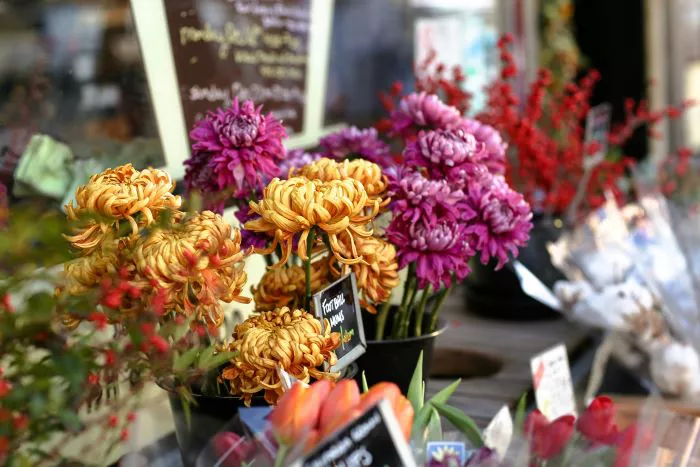Flowers have long been associated with various meanings and symbolism. Different colors of flowers can convey different emotions and messages. Among these meanings, the color that most prominently represents healing is often considered to be green. However, other colors, particularly blue and purple, also hold significant associations with healing. This article will explore the symbolism of these colors in flowers, their meanings, and specific flowers that embody the healing properties associated with each color.
The Significance of Color in Flowers
Colors play a vital role in how we perceive flowers and the emotions they evoke. Each color has its own unique symbolism, which can vary across cultures and contexts. In the realm of healing, certain colors are believed to have calming and restorative effects. Understanding these associations can enhance our appreciation of flowers and their role in promoting well-being.
Green Flowers and Healing
Green is often associated with nature, growth, and renewal. It represents balance, harmony, and healing in many cultures. The color green is prevalent in the natural world, symbolizing life and vitality. Flowers that are green or have green hues can evoke feelings of tranquility and restoration.
One flower that embodies this healing aspect is the Green Chrysanthemum. This flower is often associated with positivity and rejuvenation. It is believed to promote healing and well-being, making it a popular choice for those seeking comfort during times of illness or emotional distress.
Another flower to consider is the Green Orchid. Orchids are known for their exotic beauty and are often associated with strength and luxury. The green variety symbolizes health and renewal, making it a suitable flower for promoting healing and growth.
Blue Flowers and Healing
Blue flowers are often linked to calmness and tranquility. The color blue is known for its soothing qualities, which can help reduce stress and anxiety. In the context of healing, blue flowers can promote peace and emotional stability.
The Bluebell is a beautiful example of a blue flower that represents healing. These delicate flowers are often associated with humility and gratitude. They are believed to bring a sense of peace and comfort to those who are suffering.
Another notable blue flower is the Forget-Me-Not. This flower symbolizes remembrance and love. It is often given to those who are grieving or in need of support. The gentle blue hue of the Forget-Me-Not can evoke feelings of calmness and reassurance, making it a meaningful choice for healing.
Purple Flowers and Healing
Purple is a color often associated with spirituality, wisdom, and healing. It is believed to have a calming effect on the mind and body, making it an ideal color for promoting emotional and physical healing.
The Lavender flower is perhaps the most well-known purple flower associated with healing. Lavender is renowned for its soothing fragrance and is widely used in aromatherapy. It is believed to help reduce anxiety, improve sleep, and promote relaxation. The calming properties of lavender make it a popular choice for those seeking emotional healing.
Another purple flower that represents healing is the Purple Iris. Irises symbolize hope and faith. They are often seen as a reminder to stay strong during difficult times. The vibrant purple color of the iris can uplift spirits and encourage healing.
Combining Colors for Healing
While green, blue, and purple flowers each have their unique associations with healing, combining these colors can enhance their effects. A bouquet that includes a mix of these colors can create a powerful symbol of support and comfort.
For example, a floral arrangement featuring green chrysanthemums, bluebells, and lavender can convey a strong message of healing. This combination not only looks beautiful but also brings together the calming qualities of blue, the restorative nature of green, and the soothing properties of purple.
The Role of Flowers in Healing Practices
Flowers have been used in healing practices for centuries. In many cultures, flowers are given as gifts to those who are ill or grieving. Their beauty and fragrance can provide comfort and solace during difficult times. Additionally, flowers are often used in alternative healing practices, such as aromatherapy and herbal medicine.
Incorporating flowers into healing spaces, such as hospitals or wellness centers, can create a calming environment. The presence of flowers can reduce stress and promote a sense of well-being for patients and caregivers alike.
Conclusion
Flowers hold significant meanings and symbolism, with specific colors representing healing and well-being. Green flowers symbolize renewal and balance, while blue flowers evoke calmness and tranquility. Purple flowers are associated with spirituality and emotional healing. Understanding these associations can enhance our appreciation of flowers and their role in promoting healing.
Whether through the gift of flowers to a loved one or by incorporating them into healing practices, the power of flowers can provide comfort and support. By choosing flowers with healing colors, we can create an environment that fosters emotional and physical well-being. In a world where stress and anxiety are prevalent, the simple act of giving or receiving flowers can be a meaningful gesture of healing and hope.


